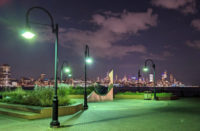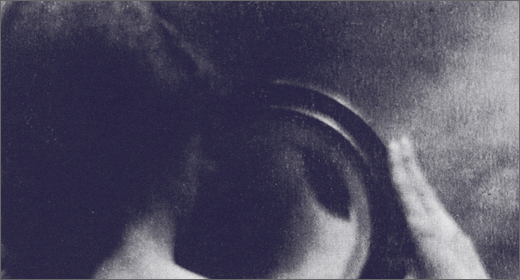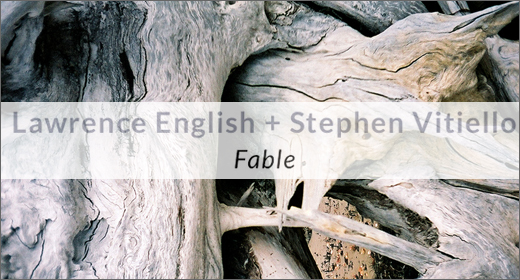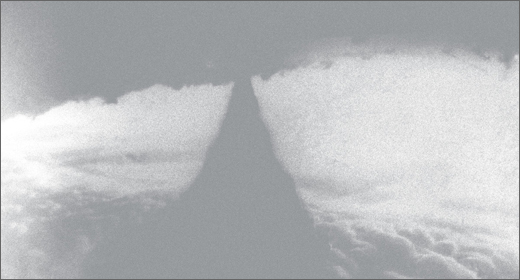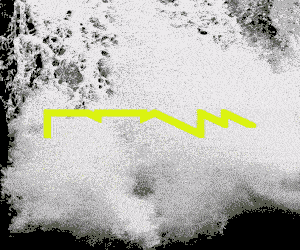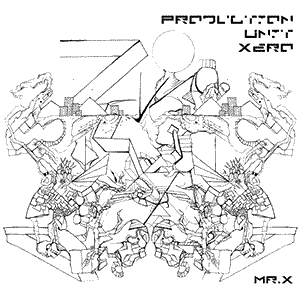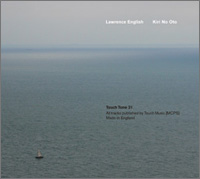
(11.26.08) “If you look through fog, you must focus on either one element in the landscape or the landscape as a whole; similarly when confronted with indeterminate auditory data, the listener may seek to absorb the sound mass or resolve to focus so as to better connect with a particular frequency spectrum or texture.” Thus conceptualises Lawrence English, who has for some time now been exploring various themes at the multi-modal interface between audio-visual environments and interactions of found sound-vision elements. And Kiri No Oto – the ‘sound of mist’ – takes this inquiry into the territory of cognitive disorientation, seeking to provide an audio-documentation of the experience of obscured environments, adding whole new resonances to that favourite epithet of reviewers for describing experimental ambient-electronica, ‘foggy’.
Deploying a variety of state-altering strategies such as filtering and harmonic distortion techniques, English here draws out a series of expanses which are populated by ambiguously resolved textures, designed to interestingly problematise listening focus. A state of micro-flux and mutability prevails, as elements seem to float into a perspective which either becomes illusory or seems to shift to require re-focus. Instrumental sounds sources commingle with found sound from location recordings to throw up dense flows of now disintegrating now coalescing soundmass, interspersed with oddly-lit apertures, oscillating between uneasy rests and natural hazard-like flurries.
“Organs Lost at Sea” opens in thick church-organ drone edged with a doom-y gruzz, before calming into the more vaporous, but still granular “Soft Fuse.” The tenor of these opening pieces nods to the likes of Aidan Baker and Tim Hecker while retaining a distinct voice. The yawning chasm which then opens onto “White Spray” is irrupted into by a harsh vortex of noise at whose tonal centre is whirled a miasma of barely apperceptible tonalities; a sensory overload that then segues into the shimmer and fade resonances emanating from “Waves Sheer Light,” whose squalling spindles of sound ripple out with an aspect of both presence and spectrality, over-exposed figures seen through a smeared glassine mist. Here the spirit of fellow-Toucher and environmental experimentalist BJ Nilsen is glimpsed. “Commentary” continues the ethnography of melodious murk, twisted harmonic treasures needing to be dug for in a bed of audio-muck. The neo-Kosmische tones of “Allay” conjurs up ghosts of Popol Vuh (along with Biosphere shades), widening the soundstage with some more tangible elektronische matter. “Figure’s Lone Static” stands out in that, unlike other pieces fixating on concept at the expense of aesthetic, it fuses a concern for genuine musical beauty in its composition with effective rendering of the mission statement; it shifts from soft pastel shades into immersive swells and billows infused with a hail of grit, unfolding into an eroded grandeur of stretched organ swathes. Closing piece “Oamura” starts out in Martin Rev-like primeval organ drones, progressively ramping up into a steepling fuzz, slowly pulled this way and that into a low keening of tidal lurches, before being eaten away by a thickening fog of static and noise, disappearing into nothing, as the plug is wrenched out and all is erased.
In sum, English’s assemblages are effective in achieving their projected concept, setting delicate pointillist tonalities against a rougher fabric of tweaked overtones and evanescent harmonics. Moments of clarity come wrapped up in clouds of confusion, while apparent obscurity is shot through with lucid flashes of errant colour and tricky texture. One to navigate with caution, certainly, but English’s soundings are ultimately engrossing, and the sound of this mist is not to be missed.
Kiri No Oto is out now on Touch. [Purchase
]






